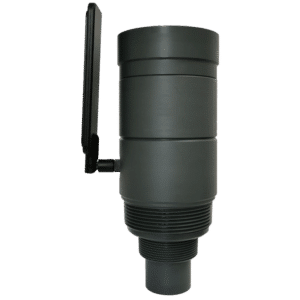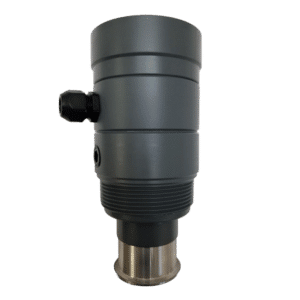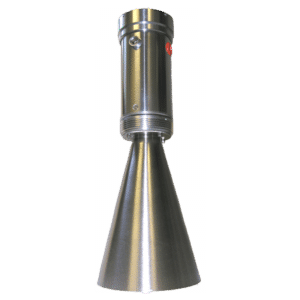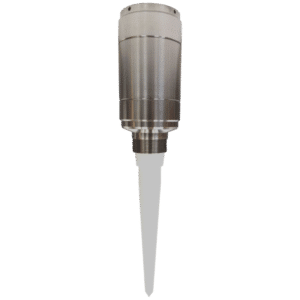Continuous Level Measurement for Liquid Applications
The UMM-LIQ immersion ultrasonic sensor from ABM is the ideal solution for pump control / protection liquid applications and liquid-solid interface detection. The submersible ultrasonic sensor matched to water can be installed bottom up to continuously monitor the height of water above a submersed pump for control and protection. The sensor can also be installed top down for continuous interface detection. The sensor can detect the interface level between liquids and solids (i.e. oil-water, sludge, sand).
The submersible sensor provides continuous level measurement up to 40’ (12.2m). 4-20 mA output and RS485 communication for two point calibration, diagnostics and data logging software are standard. The sensor can be used with the Cellular Gateway for remote monitoring and 24/7 virtual support.
Industries
- Water
- Food & Beverage
- Pharmaceutical
- Chemical
- Petrochemical
Applications
- Pump control and protection
- Interface detection (oil-water, sludge, sand)
Maintenance Free Submersible Ultrasonic Sensor.
- Self-adjusting sensor, automatically eliminates false echoes without user involvement
- Very uniform polar pattern, negligible side lobes
- Very uniform near field
- Very wide frequency bandwidth that produces uniform echoes, short ringing and wide temperature operation
- No influence from mounting, walls or obstructions on sensors performance
- No influence from temperature or pressure on measurement
- Automatically removes air bubbles and build-up from transducer face
- Self-cleaning nature provides maintenance free operation
Technology Advantage
ABM’s self-adjusting ultrasonic sensors continually monitor conditions in the environment and automatically adjust the transmitted energy, transmitted pulse amplitude and it’s duration, and receiver sensitivity to match to the current tank conditions. This technique allows the receiver to detect only one echo from the measured media while all false echoes are pushed under the noise level and eliminated. The self-adjusting technique also gives the same amplitude of wanted echoes regardless of distance to the target. With one echo only, signal processing is very simple and the certainty of the measured echo being the target is 100%. This makes the ABM sensors very accurate and reliable.
The sensors have very narrow and uniform polar patterns. ABM’s ultrasonic technology has a very wide frequency bandwidth that produces uniform echoes, short ringing, and wide temperature operation.
Operation is plug-and-play with ABM sensors. The self-adjusting nature means there is no need for mapping or profiling the environment or downloading several parameters. These signal process operations commonly used by other brands reduce the certainty in the measured materials level. ABM sensors are smart and automatically adapt without user involvement.
Range: 18″ to 40 ft (0.45 to 12.2m)
Technology: Ultrasonic (matched to water)
Frequency: 148 KHz
Calibration: Simple two point calibration
Output: 4-20 mA out standard
Power: 12-30VDC (3-wire) operation
Communication: RS485 for two point calibration, diagnostics and data logging software
Remote Communication: Remote monitoring and 24/7 virtual support with optional Cellular Gateway
Enclosure: 316L stainless steel
Transducer Material: Teflon
Installation Category: Class II
Temperature: 60°C (140°F) maximum
Pressure: ≤ 5 Bar (72.5 psi)




